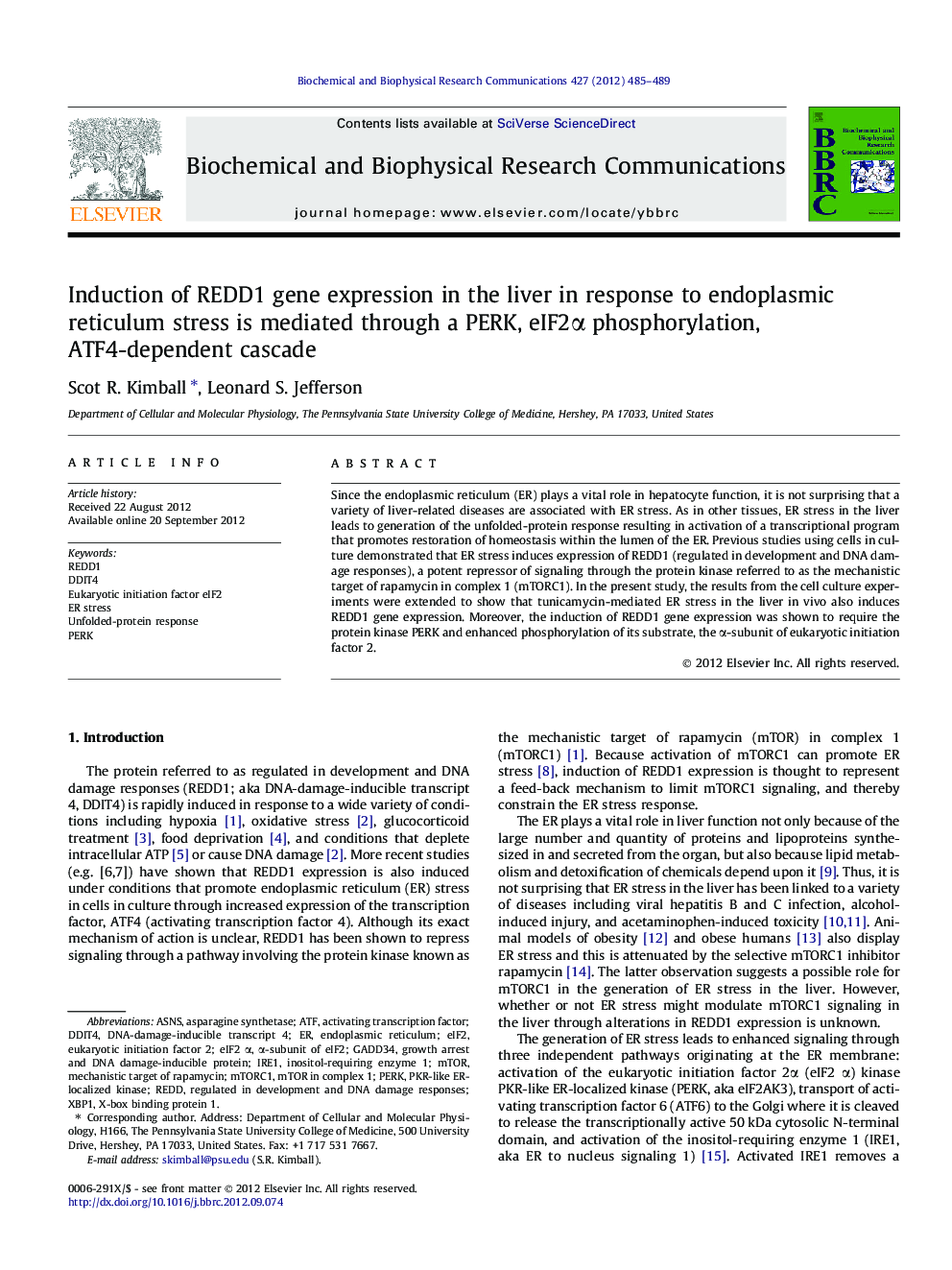| Article ID | Journal | Published Year | Pages | File Type |
|---|---|---|---|---|
| 1929123 | Biochemical and Biophysical Research Communications | 2012 | 5 Pages |
Since the endoplasmic reticulum (ER) plays a vital role in hepatocyte function, it is not surprising that a variety of liver-related diseases are associated with ER stress. As in other tissues, ER stress in the liver leads to generation of the unfolded-protein response resulting in activation of a transcriptional program that promotes restoration of homeostasis within the lumen of the ER. Previous studies using cells in culture demonstrated that ER stress induces expression of REDD1 (regulated in development and DNA damage responses), a potent repressor of signaling through the protein kinase referred to as the mechanistic target of rapamycin in complex 1 (mTORC1). In the present study, the results from the cell culture experiments were extended to show that tunicamycin-mediated ER stress in the liver in vivo also induces REDD1 gene expression. Moreover, the induction of REDD1 gene expression was shown to require the protein kinase PERK and enhanced phosphorylation of its substrate, the α-subunit of eukaryotic initiation factor 2.
► Endoplasmic reticulum stress was generated in liver in vivo using tunicamycin. ► Expression of the mRNA encoding the mTORC1 repressor REDD1 was induced. ► Induction of REDD1 gene expression required the protein kinase PERK. ► Induction of REDD1 expression was mediated through eIF2α phosphorylation/ATF4.
